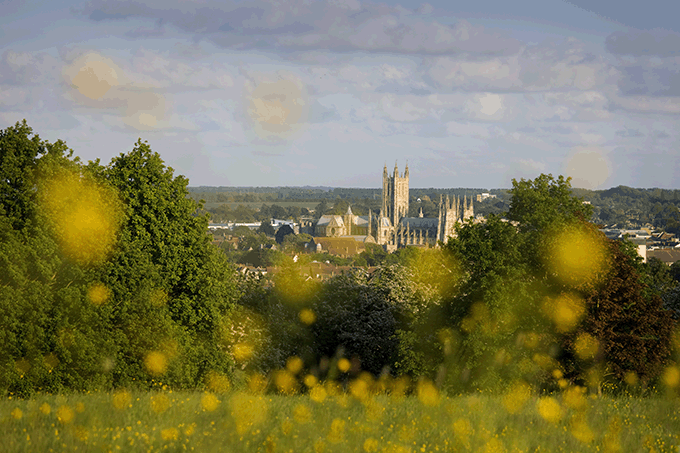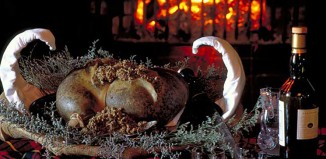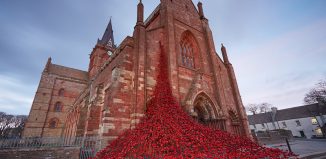Discover… the South East
For centuries the most pressing concern for the people who lived in the south-eastern corner of England was the threat of invasion. Indeed, the countryside of Kent and Sussex has witnessed some of the most important battles in the nation’s history – perhaps, most famously, the Battle of Hastings, which will be remembered next year on its 950th anniversary.
But not every invasion was violent. At Canterbury, alongside the magnificent cathedral, you can see the ruins of St Augustine’s Abbey and the Victorian reconstruction of St Martin’s Church, the two oldest churches in the country. Both date from Augustine’s mission to convert the English Saxons to Christianity in 598.
Canterbury Cathedral is one of the most important medieval buildings in Britain, and still the centre of the Anglicanism. It is a truly amazing building, full of stories, the most famous of which, of course, is the bloody murder of Archbishop Thomas Becket. In 1170, he was dispatched in the north-west transept by four knights who believed, perhaps correctly, that they were carrying out the wishes of Henry II.
There is some debate over exactly where the Roman invasion force landed in Kent in 43 AD, but the two most likely spots are at either end of the Wantsum Channel, a backwater that once separated Kent’s north-eastern tip, the Isle of Thanet, from the mainland. At both you can see the remains of later forts.
At Richborough on the eastern coast there is not much to see today beyond some crumbling walls of the fort. But Reculver, on the north coast, is a more impressive site, thanks to the 12th century towers of the early medieval church built inside the Roman walls. These survived the demolition of the rest of the church in the 19th century because of their value as a navigational aid to shipping.
Kent is not all Romans and religion, however. Also near Sevenoaks is Ightham Mote, a 14th century stone and timber manor house, now a confusing mix of
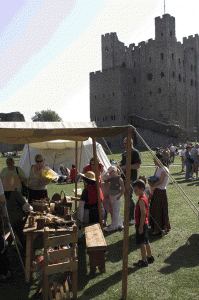
architectural styles including medieval, Tudor and 18th century, as if an indecisive builder had been living here for 700 years.
Admirers of the writings of Charles Dickens will enjoy attractions dedicated to him at Broadstairs, on the Isle of Thanet. You can visit the house where Dickens holidayed and worked on Bleak House and David Copperfield, and the Dickens House Museum on the breezy cliff-top seafront. The writer’s home town of Rochester also remembers him, in the enjoyable Charles Dickens Centre on the High Street.
But Rochester is really about its fantastic castle. Largely 11th century, it has a huge, overbearing square keep, 100 feet high, with towers at each corner, three square and one round, the latter a replacement for one blown up during a siege in 1215.
In the pleasant countryside of south-west Kent is Chartwell, former home of Winston Churchill, who led the country to victory in the Battle of Britain over the skies of the south-east the last time it was threatened by invasion.
You can also visit the gorgeous Hever Castle, home both of Anne Boleyn and later of her less captivating but decidedly more fortunate successor, Anne of Cleves. The castle’s Tudor splendour was fully restored, with the addition of some luxurious Edwardian interiors, by the American millionaire William Waldorf Astor during the early 20th century.
In September 1066, William, Duke of Normandy made landfall in Sussex, at Pevensey. Today you can see the significant sites of the Conqueror’s violent campaign, starting with Pevensey Castle, rebuilt by William’s half-brother Robert de Mortain within derelict Roman fortifications.
The Normans were able to advance unopposed from their vulnerable position in Pevensey marshes towards Hastings. At this enjoyable seaside town you can explore another ruined Norman castle, and visit some entertaining maritime institutions: the Fisherman’s Museum and the Shipwreck Heritage Centre.
Just a few miles north-west is the small town of Battle, which grew up around the monastery William built to give thanks for his victory over Harold. There is a visitor centre in the gatehouse of the partly ruined abbey, built in the middle of the battlefield, its high altar on the spot where Harold fell.
Behind its coastline, the region’s most notable natural feature is the line of chalk hills that form the South Downs, running for about 100 miles from Eastbourne to Winchester. Near the path of the South Downs Way stands the Long Man of Wilmington. A mysterious, faceless chalk figure 226 feet long, cut into the hills near Eastbourne, he holds two staves that might once have been agricultural implements.
One of the most entertaining towns in this area is Lewes, where you can climb the battered tower of the ruined castle to enjoy views up and down the Ouse Valley, and visit Harvey’s brewery, which has been producing deliciously palatable ale for 200 years.
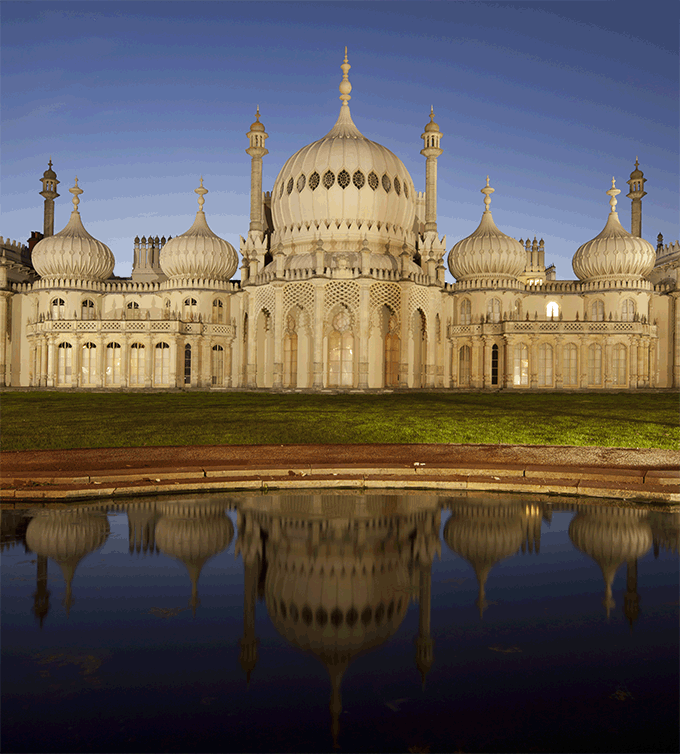
A large, vibrant seaside city made up of fine Regency and Victorian architecture, Brighton has innumerable good pubs and restaurants. Here is the overwhelming Brighton Pavilion, the kitsch creation of George IV’s hedonistic youth, a bizarre mix of many exotic styles among which Moorish, Indian and Chinese are the most easily distinguishable.
The town of Chichester to the west, with its large natural harbour, was an important town during the Roman period, and is close to one of Britain’s most impressive Roman sites, Fishbourne Palace. There were about 100 rooms here, and you can see fabulous mosaics and a recreated first century garden. Fishbourne was built soon after the Roman invasion for a local tribal leader, Cogidubnus, who clearly decided that if he could not beat the Romans, he would join them.
Windsor Castle, west of London, is Britain’s largest fortress, with its huge round keep and crenellated turrets looming high over the streets of the town. William the Conqueror built a motte and bailey castle here in 1070, rebuilt in stone by Henry II 100 years later and still a favourite royal residence today. The state rooms are superb, including the magnificent St George’s Hall, expertly restored after a catastrophic fire in 1992. You should also visit the 15th century St George’s Chapel, truly a masterpiece of perpendicular architecture and last resting place of many English monarchs including Henry VIII, Charles I and George III.
Also close to Windsor is Eton College, England’s most famous public school, founded in the 15th century. Former pupils have included 18 British Prime Ministers and, more recently, Princes William and Harry. Guided tours take in a 15th century schoolroom and the chapel.
The fine waterfront city of Portsmouth reaches out into a vast natural harbour, and is the most important place in British naval history. Here you can sample many centuries’ worth of maritime heritage, including the half-rotted hull of Henry VIII’s flagship the Mary Rose, lifted from the sea bed of the Solent in 1982, 437 years after she sank beneath the waves.
The cramped and dangerous living conditions of ordinary sailors in the Navy during the 18th and early 19th centuries are brought home on board HMS Victory, Nelson’s flagship at Trafalgar. The guided tours around this beautifully restored vessel are deservedly popular, and a must for anyone interested in the fact and fiction of this swashbuckling period. Among several other fascinating places to visit in the harbour is the D-Day Museum – it was largely from Portsmouth that the invasion force left for Normandy in 1944.
Across the Solent to the south is the Isle of Wight, a delightful slice of southern England in miniature with some fine coastal and hilly scenery. Here you can visit Osborne House, which was one of Queen Victoria’s favourite homes, built in the 1840s in the Italianate style. It has some stiff formal state rooms, but the most interesting part of the house are the rooms where Victoria and Albert’s children played during their early years.
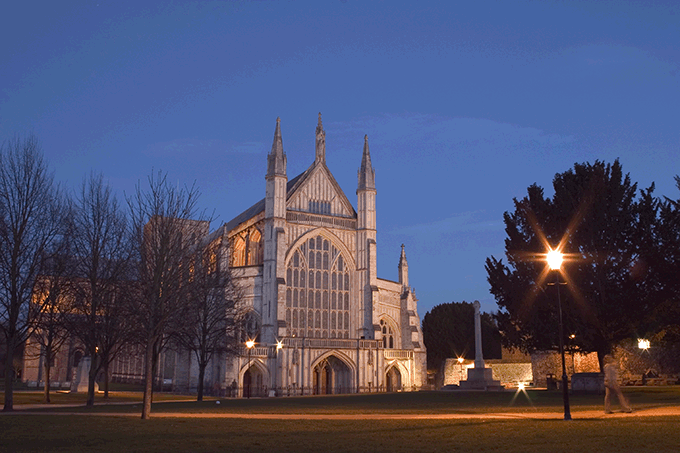
Winchester Cathedral in Hampshire was built between the 12th and 15th centuries to replace a 7th century Saxon predecessor, and is my favourite English cathedral. Its dark but welcoming interior is full of superb craftsmanship and houses the graves of the wise Danish King Cnut; the not quite so wise William Rufus, killed, possibly not by accident, in the New Forest just south-west of here; and of one of the most important writers in English literature, Jane Austen.
Elsewhere in the city’s medieval streets you can see fragmentary Roman remains and visit the Great Hall, the only part of Winchester Castle not destroyed by the Parliamentarian Army during the Civil War, and which houses a large 14th century Round Table, claimed during the Tudor period to be that used by King Arthur and his knights.

